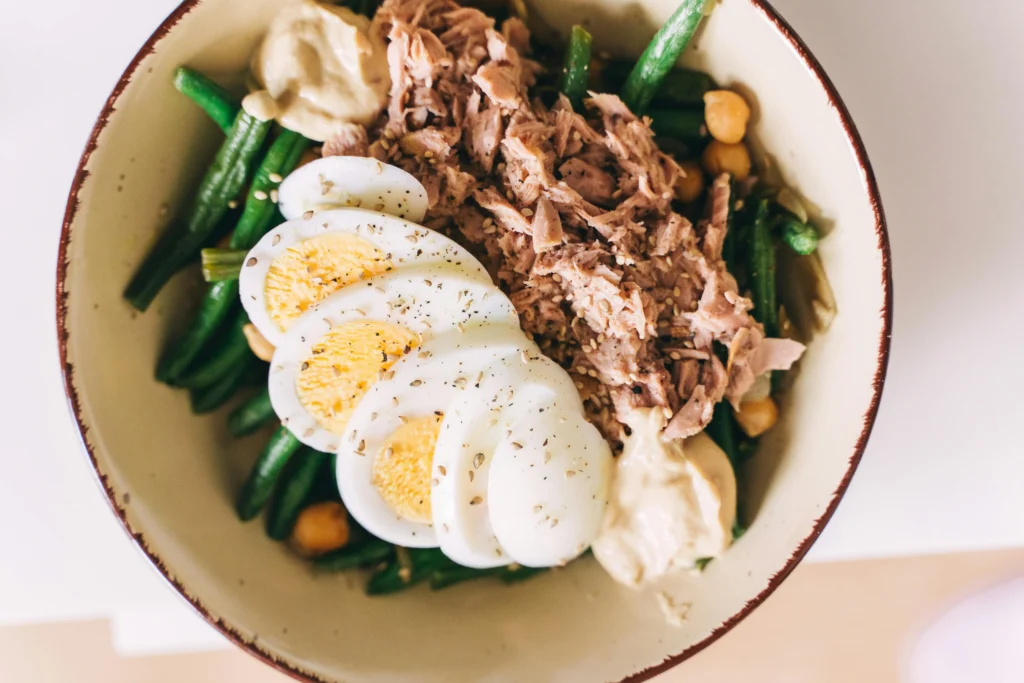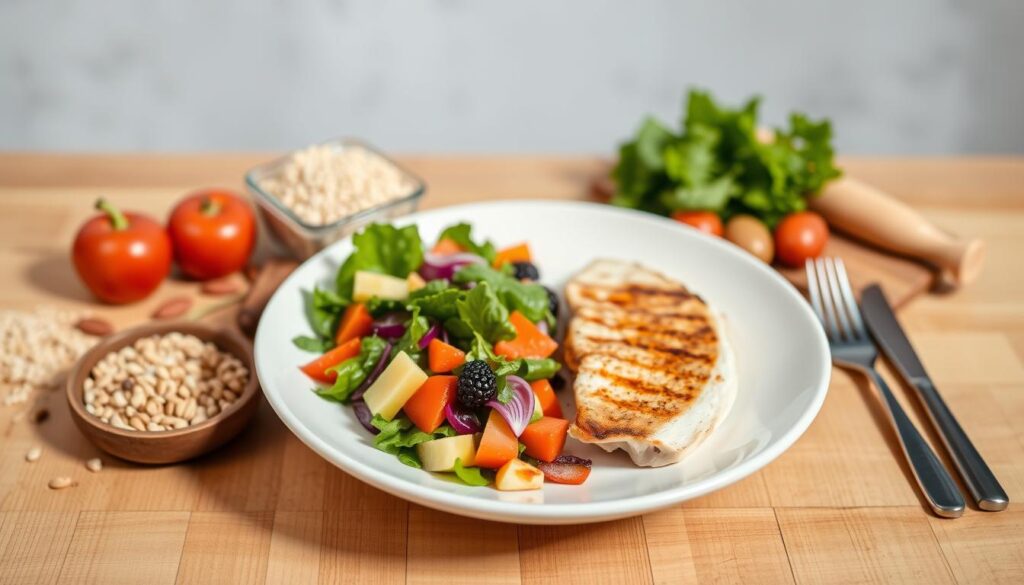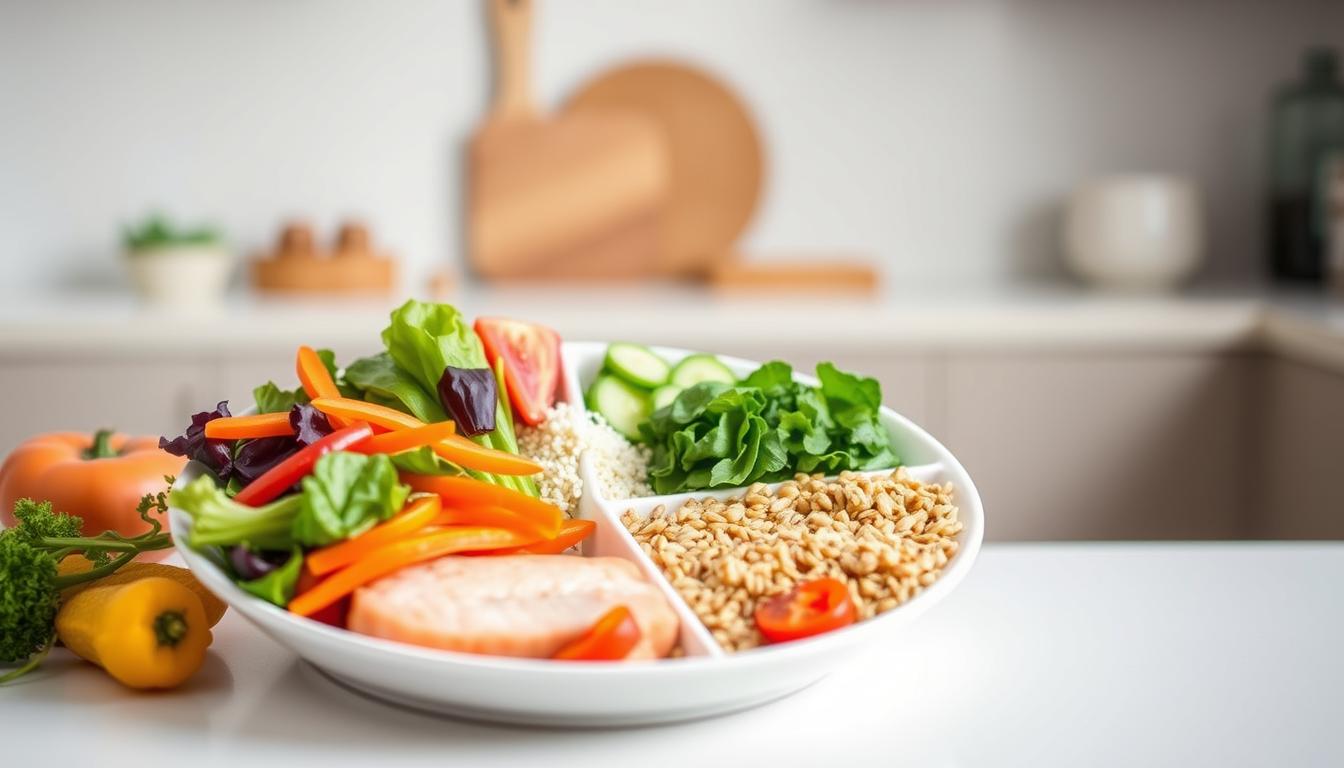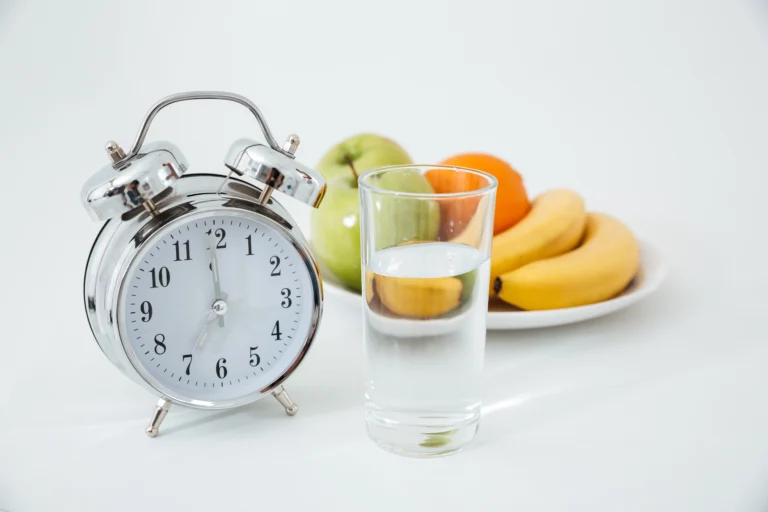Building a Balanced Meal Plate : Tips For Better Health
Ever looked at your plate and wondered if it’s good for you? A balanced meal plate is more than just food. It’s about choosing the right nutrients to boost your health.
Most Americans don’t get enough veggies, missing out on key nutrients. A healthy plate is key to feeling your best. It’s about picking the right mix of proteins, carbs, and veggies.
Imagine feeling full of energy and confident about what you eat. This guide will show you how to make a balanced meal plate. It’s all about supporting your health, managing weight, and enjoying your food.
Table of Contents
Key Takeaways
- Create a plate with 25% protein, 25% carbohydrates, 25% vegetables, and 25% healthy fats
- Prioritize nutrient-dense foods for long-term health benefits
- Include diverse protein sources like lean meats, beans, and fish
- Choose whole grains for sustained energy and digestive health
- Aim for colorful vegetables to maximize nutrient intake
Understanding the Balanced Meal Plate Components
Creating a nutritious meal is like an art. It mixes different food groups for a mix of macronutrients and micronutrients. Your balanced meal plate helps fuel your body with the nutrients it needs for health and energy.
To make a balanced meal, you need to know how to mix food elements well. Let’s look at the key parts of a nutritionally complete plate.
Essential Protein Sources
Protein is key for muscle repair and body function. Choose lean and diverse protein sources:
- Fish (salmon, tuna)
- Poultry (chicken, turkey)
- Beans and legumes
- Nuts and seeds
- Eggs
Complex Carbohydrates and Whole Grains
Complex carbs give you lasting energy and fiber. Fill one-quarter of your plate with whole grains:
| Whole Grain | Nutritional Benefit |
|---|---|
| Brown Rice | High in fiber, supports digestive health |
| Quinoa | Complete protein, rich in minerals |
| Whole Wheat Pasta | Lower glycemic index, more nutrients |
| Oats | Supports heart health, stabilizes blood sugar |
Vegetables and Fruits Selection
Your plate should have half vegetables and fruits. Focus on vegetables for their micronutrients:
- Leafy greens (spinach, kale)
- Colorful vegetables (bell peppers, carrots)
- Seasonal fruits
- Berries for antioxidants
By picking and balancing these food groups, you make meals that nourish your body and support health over time.
The Science Behind Portion Control
Understanding portion control is key for a healthy diet and wellness. Dietary guidelines say mindful eating starts with knowing serving sizes and listening to hunger cues.
Research shows how portion sizes affect our health. It finds that people usually eat all they serve themselves. This makes portion control vital for weight control.
- Recommended plate distribution:
- Vegetables: 50%
- Protein: 25%
- Carbohydrates: 25%
Using your hand as a measuring tool is a simple way to control portions. Hand-sized portions offer a personal guide to serving sizes:
| Food Type | Women’s Portion | Men’s Portion |
|---|---|---|
| High Protein Foods | Palm-sized | Two palm-sized |
| Vegetables/Fruits | One cupped-hand | One cupped-hand |
| High Carb Foods | Fist-sized | Two fist-sized |
| High Fat Foods | Thumb-sized | Two thumb-sized |
Using portion control can help manage blood sugar, support weight, and improve digestion. Being mindful of your eating and knowing serving sizes can greatly improve your nutrition.
Mastering Macronutrient Distribution
Knowing about macronutrients is key to a healthy diet. Your body needs proteins, healthy fats, and carbs to work well. The right mix of these nutrients can boost your health and energy.

Eating balanced means following the “Rule of Threes”. This rule says to have protein, fat, and carbs in every meal. It helps your body get all the nutrients it needs.
Protein Requirements for Optimal Health
Protein is vital for muscle health and overall well-being. Your protein needs change based on:
- Age and activity level
- Muscle-building goals
- Overall health status
Studies show protein is key for muscle growth and better body shape. Most adults need 0.8-1.2 grams of protein per kilogram of body weight.
Healthy Fat Integration
Healthy fats are important for brain function, hormone production, and heart health. Foods like avocados, nuts, and olive oil are full of these essential fats.
Smart Carbohydrate Choices
Not all carbs are the same. Choose complex carbs for lasting energy and nutrition:
- Whole grains
- Vegetables
- Legumes
- Fruits
A good macronutrient ratio is 40% protein, 40% carbs, and 20% fat.
| Macronutrient | Calories per Gram | Key Functions |
|---|---|---|
| Protein | 4 | Muscle repair, immune support |
| Carbohydrates | 4 | Energy production, brain function |
| Fat | 9 | Hormone regulation, nutrient absorption |
Remember, nutrition should be tailored to you. Talk to a registered dietitian to create a plan that fits your health goals.
Creating Your Balanced Meal Plate

Making a balanced meal plate is key to better nutrition. It’s about knowing how to spread out your food groups. Your plate should show a mix of healthy foods.
Here’s how to make your plate perfect for nutrition:
- 25% Lean Protein: Choose options like chicken, fish, tofu, or legumes
- 25% Complex Carbohydrates: Opt for whole grains, quinoa, or sweet potatoes
- 25% Non-Starchy Vegetables: Include colorful options like broccoli, spinach, and bell peppers
- 25% Healthy Fats: Incorporate avocado, olive oil, or nuts
Let’s look at a real example of a balanced meal plate. You might have 3-4 ounces of grilled chicken, 1/2 cup of brown rice, 1 cup of mixed green salad, and a small slice of avocado. This mix ensures you get lots of nutrients and eat the right amount.
If you follow a special diet, it’s important to be flexible. Vegetarians can use beans, lentils, or tempeh instead of meat. The main idea is to make a plate that’s full of nutrients and keeps you full.
Remember, meal planning gets better with time. Start small and get better at making healthy, balanced meals.
Meal Planning Strategies for Success
Start your journey to healthy eating with smart meal planning. Use strategic techniques to make balanced meals easy every day.
Meal planning is more than saving time. It’s about building lasting healthy eating habits. Studies show 55% of people stay on track with their diet goals. Families can also cut their grocery bills by up to 50% with good planning.
Weekly Preparation Techniques
Make meal planning easier with these tips:
- Batch cook proteins and grains on weekends
- Pre-chop vegetables for quick assembly
- Store prepared ingredients in clear containers
- Plan meals around seasonal food groups
Shopping List Essentials
Make a reliable shopping list for balanced meals:
- Lean proteins (chicken, fish, tofu)
- Whole grains
- Fresh vegetables and fruits
- Healthy fats (avocado, nuts)
Time-Saving Meal Assembly
Save up to 50% on meal prep time with these tips. Use pre-cut veggies, microwaveable grains, and plan your ingredients well.
Pro tip: Aim to prepare 2-3 balanced meals per week to build consistent healthy eating habits!
These meal planning strategies save time and money. They also help you make nutritious, tasty meals that boost your health.
Conclusion
Building a balanced meal plate is more than just a diet. It’s a way to reach optimal health. Learning about nutritious portions and healthy eating can change your daily meals. The USDA’s MyPlate guidelines help you make meals that meet your body’s needs.
Starting a balanced meal plate journey doesn’t mean you have to be perfect. Small, steady changes can make a big difference in your health. Begin by adding more veggies, whole grains, and lean proteins to your meals. Remember, only 10% of U.S. adults eat enough veggies, so you’re making a great choice for your health.
Enjoying a balanced meal plate has many long-term benefits. It can lower the risk of chronic diseases and boost your energy. By eating healthy, you’re investing in a better future for yourself.
Your journey to better nutrition is unique and ongoing. Think about getting advice from a nutritionist, drink plenty of water, and be patient with yourself. A balanced meal plate is a lifelong journey of caring for your body.








12 Comments
Comments are closed.